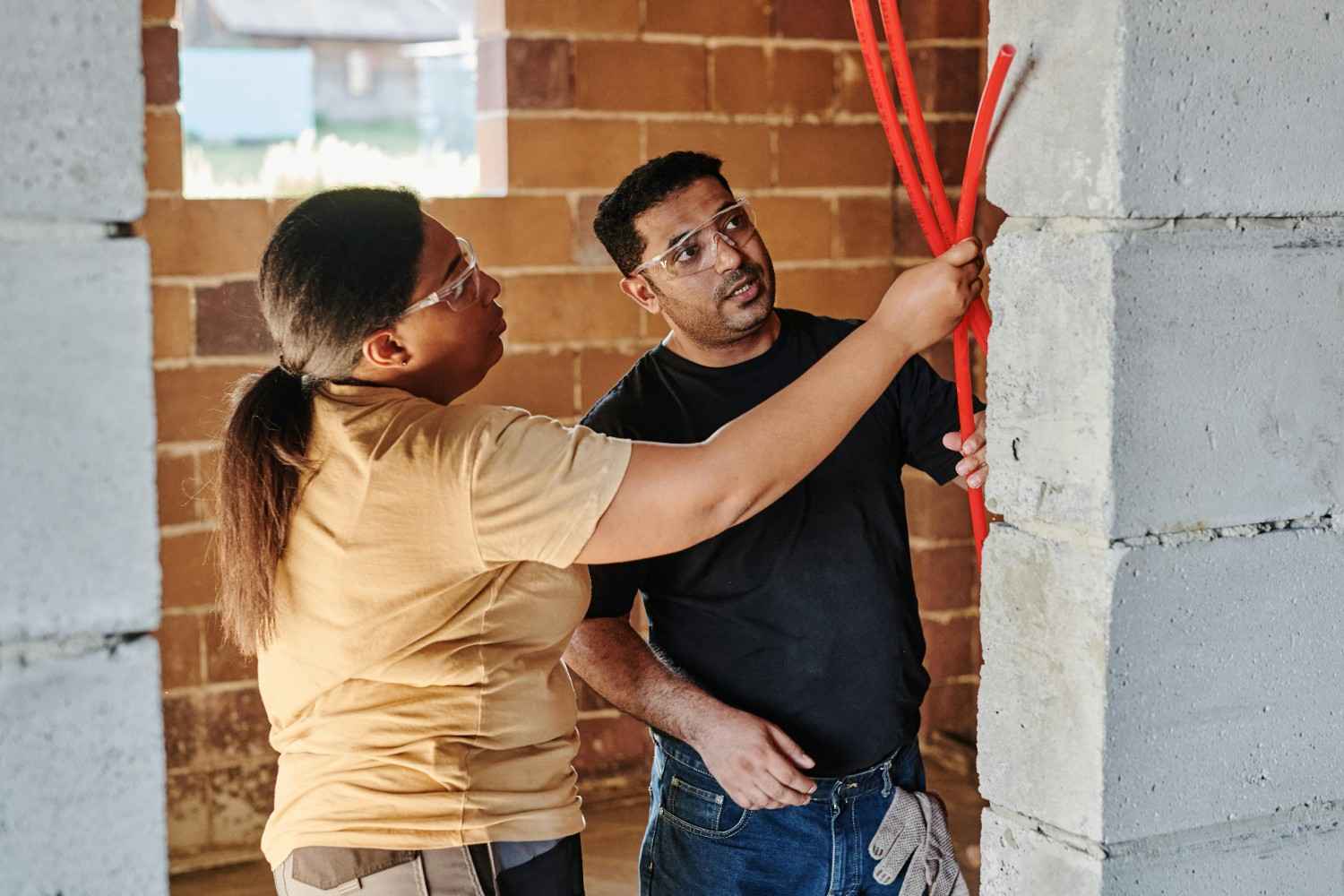Last updated on February 27th, 2024 at 04:49 pm
The main pipes for your Combi boiler include the gas supply pipe (provides fuel), boiler flue (vents byproducts) and pressure release valve (releases excess pressure).
As Combi boilers are the most popular boiler installed in UK households, Warmable has put together the following guide for homeowners and landlords who are unfamiliar with their boiler pipes and how they affect their heating system.
Understanding the purpose of the various pipes and components of your combi boiler system is essential for maintaining your boiler and troubleshooting any issues. Knowing the system well can be helpful for when you schedule a boiler service.
Read on to explore the functions of the essential pipes and components of a combi boiler, from the mains water pipe to the pressure relief valve.
Combi Boiler Pipework
This table provides a quick overview of the different types of pipes in a combi boiler system, their importance and common issues that homeowners may encounter with each one.
| Type of Pipe | Importance | Common Issues |
| Mains Water Pipe | Supplies cold water for heating and hot water | Low water pressure, leaks, blockages |
| Gas Supply Pipe | Provides fuel for combustion | Gas leaks, blockages, supply interruptions |
| Condensate Pipe | Removes acidic condensate from the boiler | Blockages, freezing in cold weather, leaks |
| Boiler Flue | Vents combustion byproducts outside | Blockages, leaks, improper installation |
| Flow and Return Pipe | Circulates heated water for heating | Airlocks, leaks, corrosion, pump failures |
| Pressure Relief Valve | Releases excess pressure to prevent damage | Failure to release pressure, leaks, improper installation |
What Do My Boiler Pipes Do?
Mains Water Pipe
The mains water pipe serves as the vital connection between your combi boiler and the main water supply. This pipe brings in cold water directly from the water mains into the boiler. Once inside, the cold water is heated on demand by the boiler’s heating element or burner.
This heated water is then distributed throughout your home for both central heating and hot water needs. The mains water pipe ensures a constant flow of cold water, allowing your combi boiler to efficiently provide hot water whenever it’s required.
Gas Supply Pipe
The gas supply pipe is responsible for delivering natural gas or liquefied petroleum gas (LPG) to the combi boiler. This gas is used as fuel for the combustion process within your gas boiler, where it is ignited to generate heat.
The gas supply pipe connects the boiler to the main gas line, ensuring a steady and uninterrupted supply of fuel. Without this pipe, the boiler would be unable to produce heat, resulting in a loss of both central heating and hot water.
Condensate Pipe
In condensing combi boilers, the condensate pipe plays a crucial role in the efficient operation of the system. As the boiler burns gas to produce heat, it also generates condensation, which is acidic in nature.
The condensate pipe is responsible for safely removing this acidic condensate from the boiler and expelling it outside the property. By disposing of the condensate, the pipe helps prevent corrosion and damage to the boiler’s internal components, ensuring longevity and reliability.
Boiler Flue
The boiler flue is a pipe that serves as the exhaust system for the combi boiler. It safely removes the byproducts of combustion, including carbon dioxide and water vapor, from the boiler and expels them outside the property.
Proper ventilation is essential for the safe operation of the boiler, and the flue ensures that harmful gases are vented away from the home. Additionally, the boiler flue helps maintain indoor air quality by preventing the buildup of combustion byproducts within the property.
Flow Pipe and Return Pipe
The flow pipe and return pipe work in tandem to circulate heated water throughout your home’s central heating system. The flow pipe carries hot water from the boiler to the radiators or underfloor heating system, where it releases heat to warm the space.
Once the water has circulated through the heating system and cooled down, it returns to the boiler through the return pipe to be reheated. This continuous loop ensures consistent warmth throughout your home, with the flow and return pipes playing key roles in maintaining efficient heat distribution.
Pressure Relief Valve
The pressure relief valve is a safety device installed on combi boilers to prevent the buildup of excess pressure within the system.
If the pressure inside the boiler exceeds safe levels, the relief valve automatically releases water or steam to relieve the pressure and prevent damage to the boiler. This crucial component helps protect your combi boiler from potential damage or malfunction due to overpressure conditions, ensuring safe and reliable operation.
What Should I Do If I Have Problems With My Boiler Pipes?
If you have problems with your boiler pipes, it’s essential to address them promptly to ensure the continued efficiency and safety of your boiler and heating system.
If you experience issues such as low water pressure, leaks or blockages in the mains water or condensate pipes, contact a qualified engineer to diagnose and resolve the problem. Gas supply pipe issues, such as leaks or interruptions, should be addressed immediately to prevent safety hazards.
Remember, for reliable boiler repair and maintenance services, contact Warmable for professional support.


